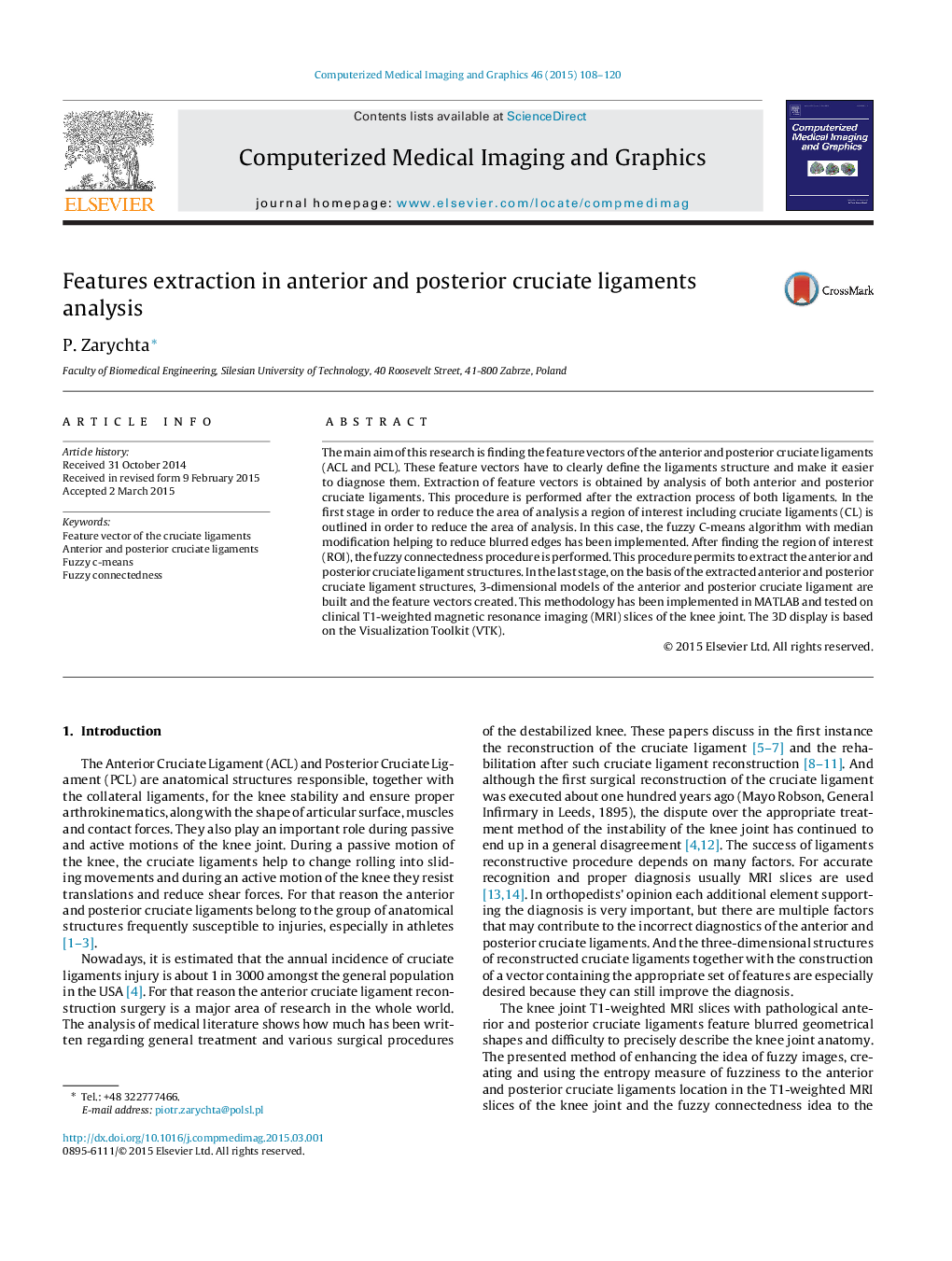| Article ID | Journal | Published Year | Pages | File Type |
|---|---|---|---|---|
| 504003 | Computerized Medical Imaging and Graphics | 2015 | 13 Pages |
•Finding of feature vectors is based on extraction process of both ACL and PCL.•Feature vectors of the ACL and PCL based on the surface and the skeleton of the CLs.•Feature vectors clearly define the ligaments structure.•Feature vectors make easier to diagnose the ligaments structure.
The main aim of this research is finding the feature vectors of the anterior and posterior cruciate ligaments (ACL and PCL). These feature vectors have to clearly define the ligaments structure and make it easier to diagnose them. Extraction of feature vectors is obtained by analysis of both anterior and posterior cruciate ligaments. This procedure is performed after the extraction process of both ligaments. In the first stage in order to reduce the area of analysis a region of interest including cruciate ligaments (CL) is outlined in order to reduce the area of analysis. In this case, the fuzzy C-means algorithm with median modification helping to reduce blurred edges has been implemented. After finding the region of interest (ROI), the fuzzy connectedness procedure is performed. This procedure permits to extract the anterior and posterior cruciate ligament structures. In the last stage, on the basis of the extracted anterior and posterior cruciate ligament structures, 3-dimensional models of the anterior and posterior cruciate ligament are built and the feature vectors created. This methodology has been implemented in MATLAB and tested on clinical T1-weighted magnetic resonance imaging (MRI) slices of the knee joint. The 3D display is based on the Visualization Toolkit (VTK).
